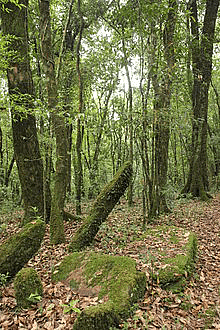Class 10 Geography Chapter 2 Question Answers - Forest and Wildlife Resources (Deducted from CBSE 2021-22 examination)
Q1. Why was Project Tiger launched? What are its objectives? What are its effects on the conservation of wildlife?
Ans. The tiger is a key species in the wildlife ecosystem. In 1973, authorities noticed that the tiger population had dropped sharply to 1,827 from an estimated 55,000 at the start of the century. Major threats to tigers include poaching for trade, loss of habitat, decline in prey, human population growth, and deforestation. Poaching for skins and bones is the main reason for the drastic decline, putting tigers on the brink of extinction. Since India and Nepal are home to about two-thirds of the world's tigers, they became prime targets for poaching and illegal trade.
‘Project Tiger’ one of the well-publicised wildlife campaigns in the world, was launched in India in 1973.
The objectives of Project Tiger are as follows:
- Banning hunting and poaching of tigers.
- Restricting trade of tiger skin, bones. etc.
- Giving legal protection to their habitats by creating tiger reserves, e.g., Corbett National Park in Uttarakhand and Sunderbans in West Bengal. There are 27 tiger reserves in India covering an area of 37,761 sq. km.
- To increase the tiger population through natural breeding within the reserves.
- To conduct periodic censuses of the tiger population.
Initially, the Project Tiger showed success as the tiger population rose to 4002 in 1985 and 4334 in 1989. But in 1993, the population of the tiger had dropped to 3600. Presently, their number has further dwindled at an alarming figure. Tiger conservation has been viewed not only as an effort to save an endangered species but with equal importance as a means of preserving biotypes of sizeable magnitude.
Q2. Discuss the role of local communities in the conservation of forests with the help of examples.
Ans. Indian forests are home to traditional communities that depend on them for their livelihood. These communities are often actively involved in conservation efforts. In some areas, they work alongside government officials, while in others, villagers protect the habitats independently, rejecting government intervention.
In Sariska Tiger Reserve, Rajasthan, villagers opposed mining activities, using the Wildlife Protection Act to fight against forest destruction. In Alwar district, five villages declared 1,200 hectares of forest as Bhairodev Dakav ‘Sonchuri,’ enforcing their own rules to protect wildlife and banning hunting. Nature worship among tribes has preserved many pristine forests as 'Sacred Groves'.
The Bishnois of Rajasthan are known for protecting endangered species like black bucks, with black bucks, nilgai, and peacocks living safely among them. The Chipko Movement in the Himalayas, led by local communities, especially women, successfully resisted deforestation and promoted community afforestation with native species.
Traditional conservation methods have been revived through movements like Beej Bachao Andolan in Tehri and Navdanya. The Joint Forest Management programme is another example of involving local communities in managing and restoring degraded forests.
Q3. What are ‘sacred groves’? Give examples of some species of flora which are worshipped by the tribals. How has the ‘sacredness’ ascribed to plants and animals helped in protecting them?
Ans. Nature worship is an ancient tribal belief that regards all elements of nature—plants, animals, and the environment—as sacred and worthy of protection. Due to this belief, many untouched forests, known as 'Sacred Groves' or forests of Gods and Goddesses, have been preserved in their natural state. Local communities protect these areas, banning any interference, and these groves are often rich in diverse and rare species.  Sacred Grooves
Sacred Grooves
Certain tribal societies hold specific species of flora as sacred, preserving them for generations. For example, the Mundas and Santhals of the Chhotanagpur region worship the Mahua (Bassia Latifolia) and Kadamba (Anthocaphalus cadamba) trees, while tribes in Orissa and Bihar revere tamarind (Tamarindus indica) and mango (Mangifera indica) trees during weddings. The sacredness attributed to certain plants and animals ensures their protection; for instance, peepal, banyan, and tulsi are commonly used in rituals and are safeguarded. Similarly, troops of macaques and langurs are often found around temples and are cared for by devotees. In the Bishnoi villages of Rajasthan, animals like black buck, nilgai, and peacocks are seen as sacred and are protected by the community.
Q4. Write a short note on Joint Forest Management. What have been the effect of Beej Bachao Andolan towards conservation of forests?
Ans. In India, the Joint Forest Management Programme is an effective model for involving local communities in managing and restoring degraded forests. Under this programme, local (village) institutions are formed to protect degraded forest land managed by the forest department. In return, community members gain benefits such as access to non-timber forest products like fruits, nuts, leaves, litter, honey, and a share of timber from successful protection efforts. Established formally in 1988 with Orissa's first resolution, this programme emphasizes community involvement in forest conservation.
Ecological farming seeks to revive traditional conservation methods to develop sustainable farming practices. Movements like the Beej Bachao Andolan in Tehri and Navdanya advocate for ecological farming, demonstrating that diverse crop production is feasible and economically viable without synthetic chemicals.
Q5. Write a note on the programmes accepted for conserving forest and wildlife in India.
Ans. Conservation of forest and wildlife is necessary because it preserves the ecological diversity and preserves our life support system. The National Forest Policy outlines the following for the protection, conservation and development of forests in India.
- Maintenance of environmental stability through preservation and restoration of ecological balance.
- Substantial increase in forest tree cover through massive afforestation and social forestry programmes.
- Steps to meet the requirements of good fuel in form of firewood and leaves, litter, fodder and minor forest products by increasing productivity of forests.
- Encouragement of efficient utilisation of forest produce and optimum substitution of wood.
- Steps to create massive people’s movement with the involvement of women to achieve the conservation of our national heritage and minimise the pressure on existing forests.
For the conservation of wildlife the following steps have been undertaken in India:
- Development of 106 national parks, 564 wildlife sanctuaries and 18 biosphere reserves.
- Implementation of Wildlife Protection Act.

Project Rhino
- Protection of remaining population of endangered species by banning hunting, giving legal protection to their habitats and restricting trade in wildlife.
- Project Tiger, Project Rhino, Project Elephant etc for protection of threatened species in their natural habitats. 27 tiger reserves have been set up under Project Tiger.
- Four coral reefs have been identified for conservation and management. Many wetlands in the country are linked with river system.
|
63 videos|445 docs|87 tests
|
FAQs on Class 10 Geography Chapter 2 Question Answers - Forest and Wildlife Resources (Deducted from CBSE 2021-22 examination)
| 1. What are the main types of forests found in India? |  |
| 2. Why is wildlife conservation important in India? |  |
| 3. What are the threats to forest resources in India? |  |
| 4. How can individuals contribute to forest and wildlife conservation? |  |
| 5. What role do national parks play in wildlife conservation? |  |

|
Explore Courses for Class 10 exam
|

|



















